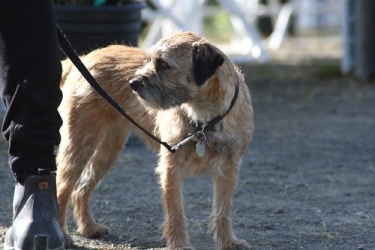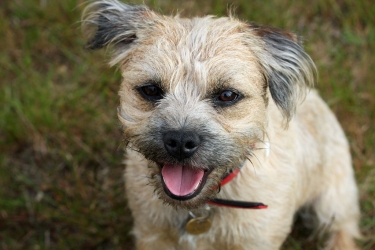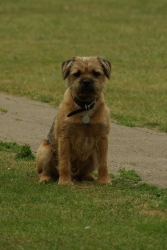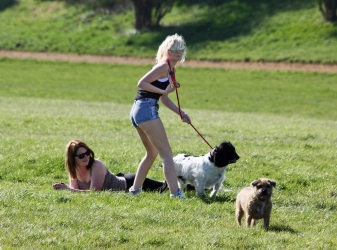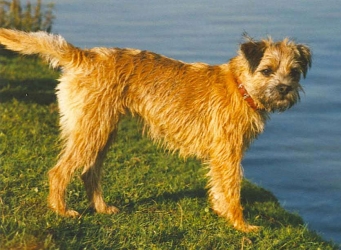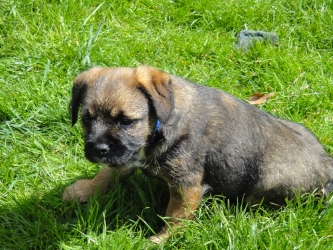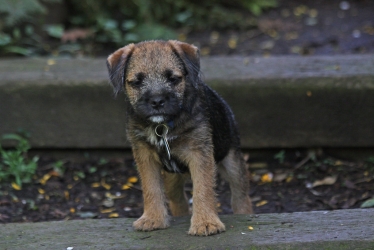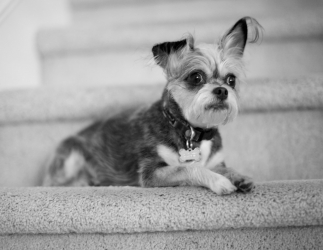Border Terrier
Border Terrier Behavior and Temperment
| Indoor Activity | Outdoor Activity | Vigor | Consistant Behavior |
| Dominance Strange Dogs | |
| Territorial | |
| Good With Children | |
| Good With Strangers |
The Border Terrier is a small, energetic, and hardy dog breed known for its friendly nature and strong hunting instincts. Originally bred for fox hunting along the border of England and Scotland, the Border Terrier is recognized for its distinctive "otter-like" head, wiry coat, and tenacious spirit. Despite its hunting background, this breed is also a loving and affectionate companion, making it a popular choice for families and individuals alike. Border Terriers are known for their versatility, excelling not only in hunting but also in various dog sports and activities.
History
The Border Terrier has its origins in the rugged border region between England and Scotland, where it was developed in the 18th century. The breed was originally bred by farmers and hunters to assist in controlling fox populations, which were a threat to livestock. Border Terriers were specifically designed to be small and agile enough to follow foxes into their dens, but also strong and determined enough to drive them out.
The breed's development was influenced by its harsh environment, resulting in a dog that is both tough and resilient. The Border Terrier's wiry coat provides protection against the elements, while its strong legs and stamina allow it to keep up with horses and hounds during long hunts.
The Border Terrier was officially recognized by the Kennel Club in the United Kingdom in 1920 and by the American Kennel Club (AKC) in 1930. Despite its working dog origins, the Border Terrier quickly gained popularity as a companion dog due to its friendly and adaptable nature.
Temperament
Border Terriers are known for their affectionate, friendly, and outgoing temperament. They are highly social dogs that get along well with people, including children, and generally do well with other dogs. Their background as working terriers has given them a strong prey drive, so they may be inclined to chase small animals such as squirrels or rabbits.
Border Terriers are intelligent and eager to please, making them relatively easy to train. However, they also have an independent streak and can be somewhat stubborn at times, so consistent and patient training is essential. They respond best to positive reinforcement techniques and enjoy activities that challenge both their minds and bodies.
Despite their hunting instincts, Border Terriers are well-suited to life as family pets. They are known for their loyalty and form strong bonds with their owners. They are also adaptable and can thrive in various living situations, from rural farms to city apartments, as long as they receive sufficient exercise and mental stimulation.
Physical Characteristics
The Border Terrier is a small, sturdy dog with a distinctive appearance. They have a compact, well-balanced body, with a strong neck, deep chest, and muscular legs. The breed's most recognizable feature is its "otter-like" head, which is broad and flat, with a short muzzle and a strong jaw.
The Border Terrier's coat is dense and wiry, designed to protect them from harsh weather and rough terrain. Their coat comes in various colors, including red, grizzle and tan, blue and tan, or wheaten. The breed's ears are small and V-shaped, falling forward close to the cheeks, and their eyes are dark and full of expression.
Below is a table comparing the average height and weight of male and female Border Terriers:
Characteristic Male Female
Height 10 to 11 inches (25-28 cm) 10 to 11 inches (25-28 cm)
Weight 13 to 15.5 pounds (6-7 kg) 11.5 to 14 pounds (5-6.5 kg)
Males are typically slightly heavier and more robust, while females are lighter and slightly more refined in build. Both sexes share the breed's characteristic agility and resilience.
Average Lifespan
The Border Terrier has an average lifespan of 12 to 15 years, which is typical for a dog of its size. The breed is generally healthy, but like all dogs, it can be prone to certain hereditary conditions, such as hip dysplasia, heart defects, and progressive retinal atrophy (PRA). Regular veterinary check-ups, a balanced diet, and regular exercise are essential to maintaining their health and longevity. With proper care, Border Terriers can enjoy a long, healthy life, remaining active and engaged well into their senior years.

